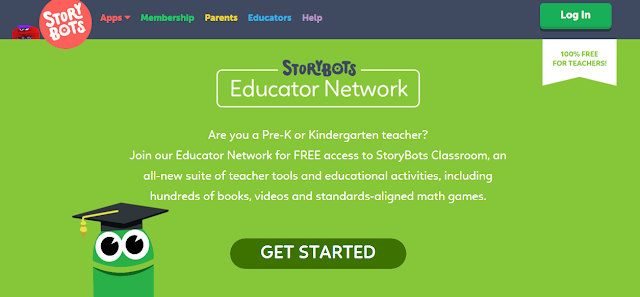Pre-K and Kindergarten teachers can have free access to StoryBots from http://www.storybots.com/educate .
StoryBots Classroom offers an expansive new suite of classroom-ready activities and resources,including:
- Math Skills – Common Core-aligned kindergarten-level math games
- Learning Videos – a library of 110+ animated musical videos that explore a wide range of topics
- Starring You® and Learning Books – 90+ eBooks that help kids practice reading
- Starring You® Videos – offering fun, quick and personalized reward for the classroom and can be used for brain breaks
- Activity Sheets – 20 printable books and 350+ sheets for teachers to use in their classrooms
- Teacher Tools – including Class Roster, Lesson Planner, Group Builder — to help educators manage their classroom and create custom plans.

Comments
Post a Comment